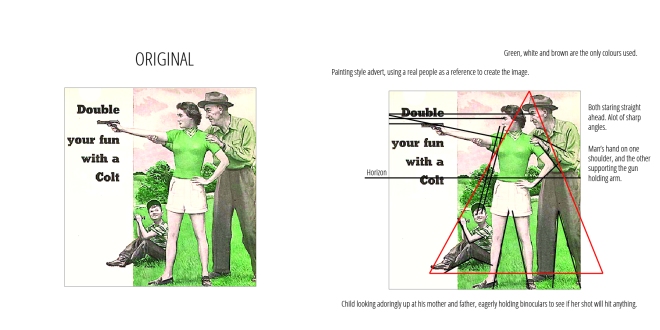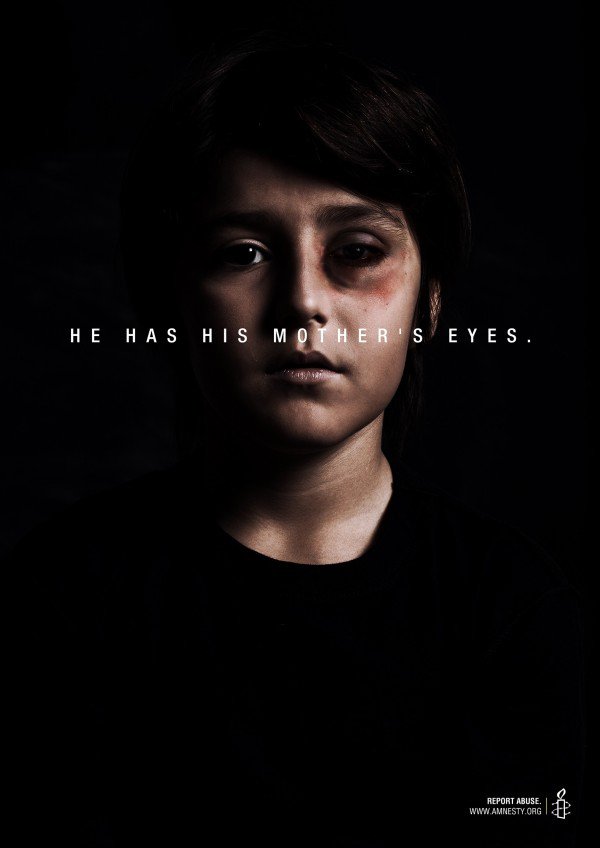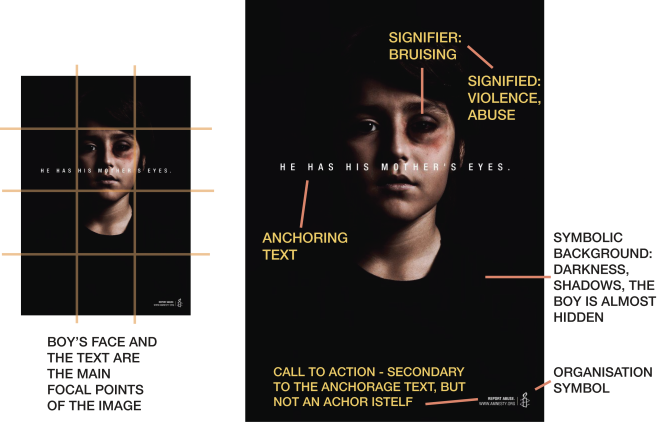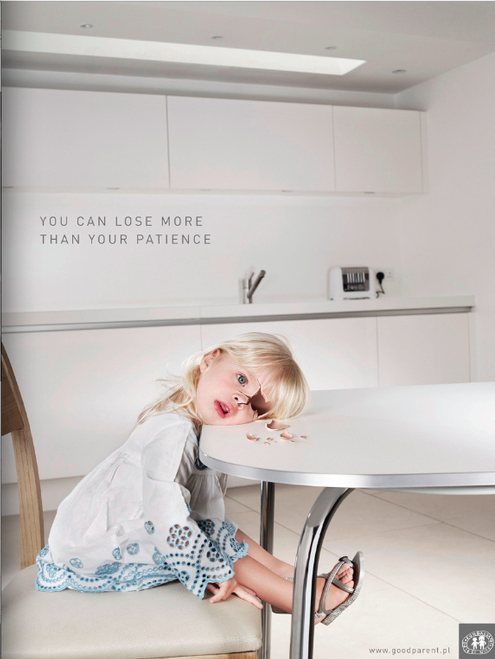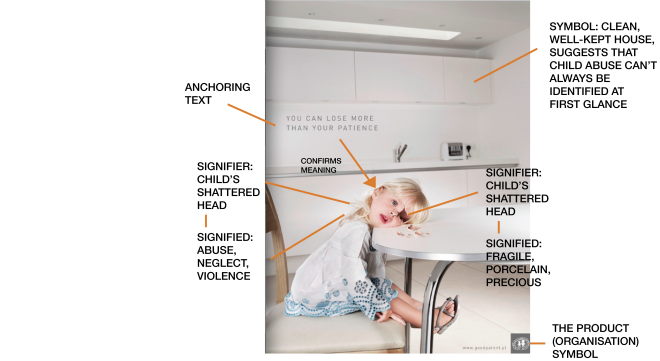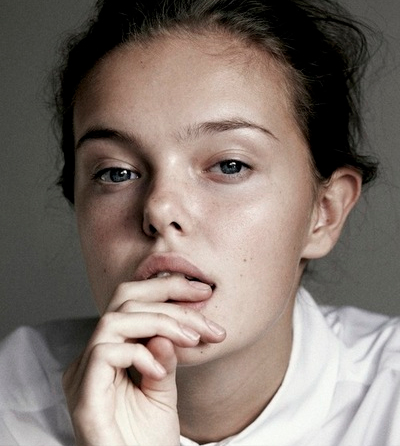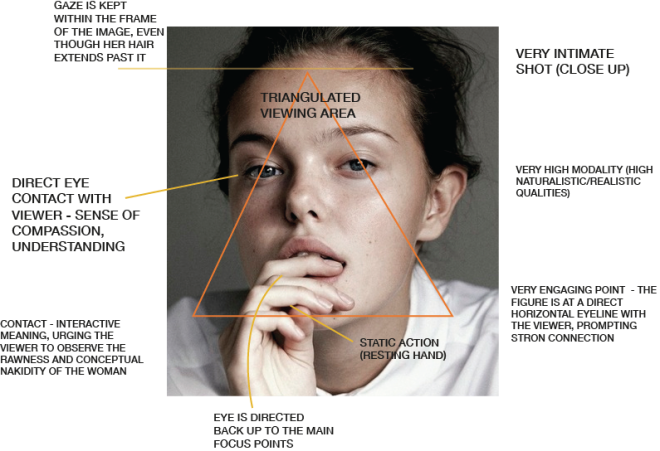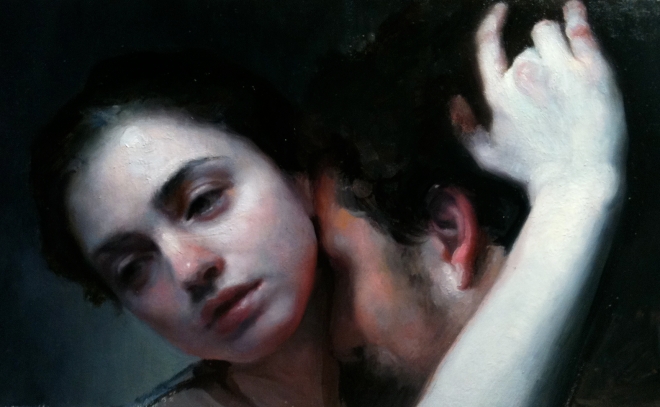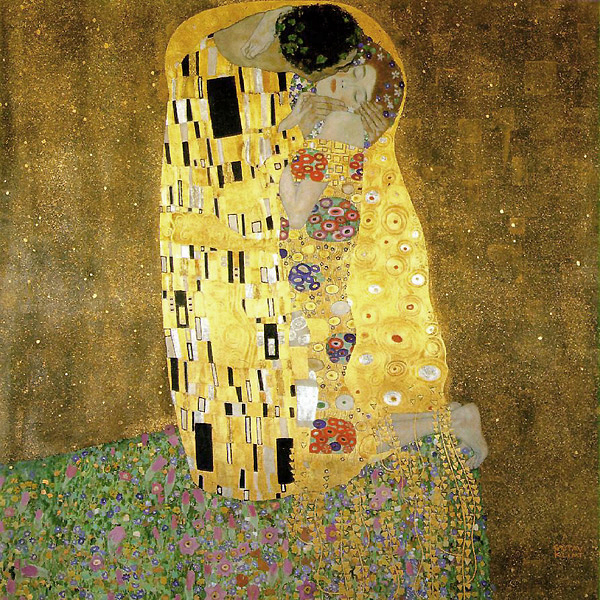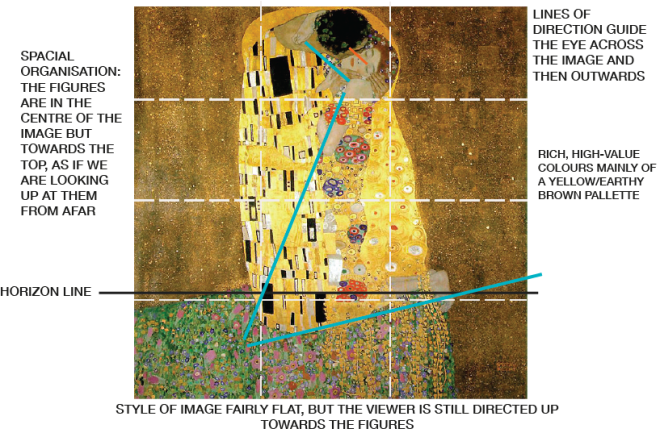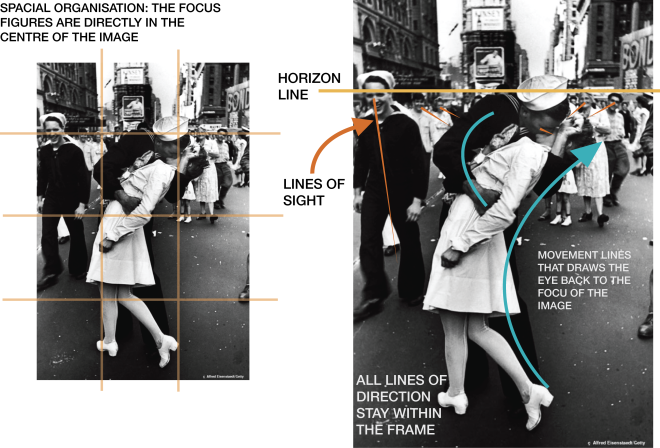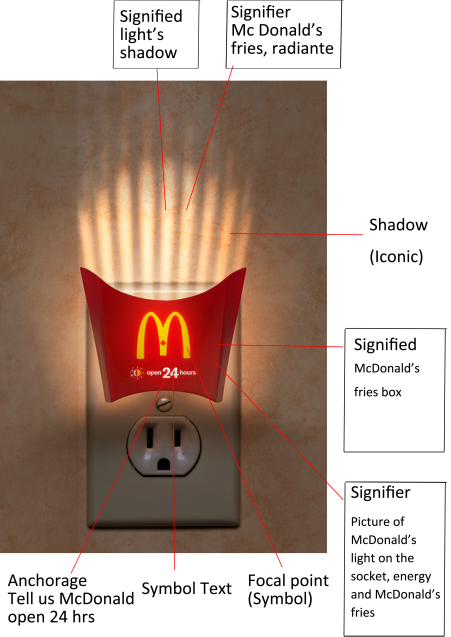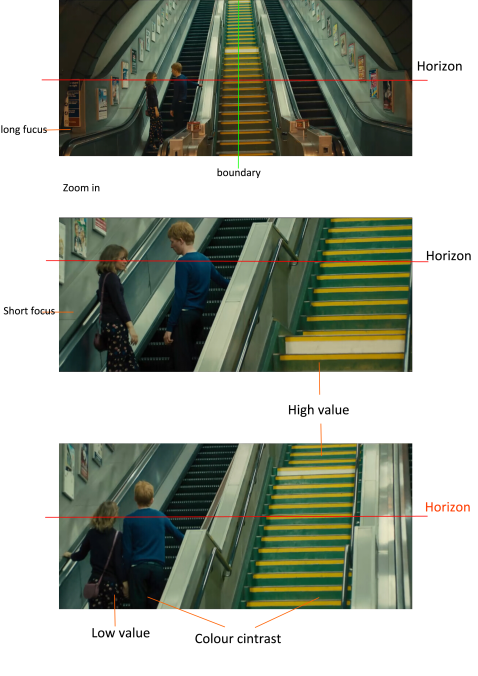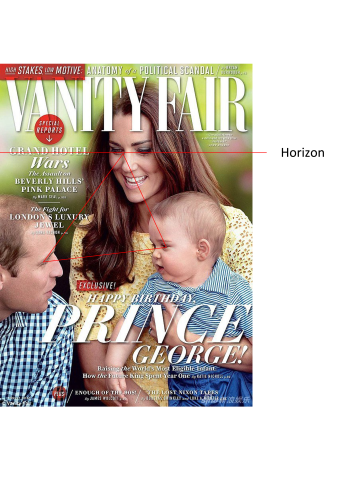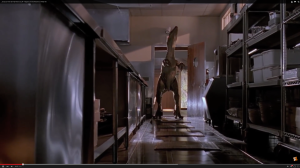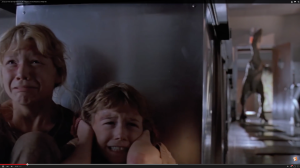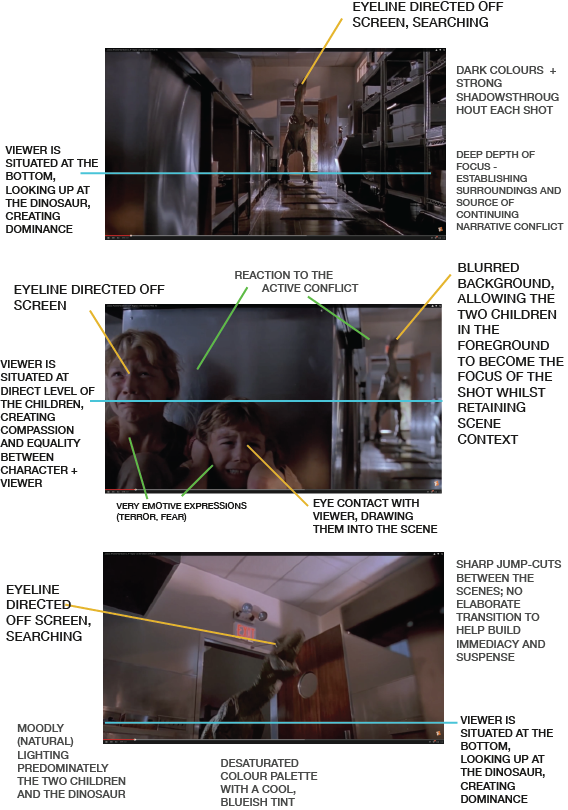Student Name: Jess Vandersande n9168214
Date of post: 27/08/15
Topic + Lecture Week: Social Semiotics (Image Analysis) WK5
Image One – Contextual Information:
Artist – Anastasia Mill
Type – Selfie
Title – Anastasia Mill
Year of Creation – 2015
Collection/source –
Medium/Technique – Photograph
Content – Simple portrait of a woman staring directly into the camera, her fingers resting at her mouth. She has no makeup on, is wearing a simple white shirt and her hair is tied messily behind her; this is a very raw, unchanged image.
Social Semiotic Analysis:
This is an intimate self portrait of a woman staring directly into the camera, holding a strong but inviting contact with the viewer. The salience of this image is her eyes, and as the eye is guided first down to her hand and across her shoulders, it is directed again back to her focal gaze. Even though the colour palette of this image is fairly earthy and neutral, the strong contrast between the darker background and the brighter glow of the woman’s skin holds strong visual focus which creates a strong foreground/background definition.
The static image is one of high modality. The closeness of the image represents the woman as a friend, whilst presenting her raw connection with the viewer, which is the main interaction of the photo.
Image Two – Contextual Information:
Artist – Maria Kreyn
Title – Alone Together
Year of creation – 2012
Dimensions – 20 x 11 inches
Collection/source – Maria Kreyn Online Portfolio
Medium – oil on canvas
Style – Realism
Image URL / origin – http://mariakreyn.com/
Content – A woman and a man embracing; the woman’s hand is resting on the man’s head, but in a somewhat reluctant fashion. Her gaze is somewhere between saddened and reluctance, and looks beyond the constraints of the painting. The figures are shrouded in shadows, with a strong luminance of skin tone on the woman, and darker shades on the man.
Social Semiotic Analysis:
The painting depicts the embrace of two figures, assumably lovers from their closeness. The image is at an intimate distance, with only their faces and the woman’s arm visible within the frame. Immediately, it can be seen that this is a social interaction with greatly strained tones, which is symbolised throughout the woman’s expression, her line of sight and the hesitance with which she embraces him. The painting is non-transactive, as there is no eye contact with the viewer (the woman’s gaze is directed down past the confines of the painting, away from the viewer and the man). The narrative can be found in the way the woman is reaction to the embrace, as if she feels no emotional connection to the man. The title of the painting, Alone Together, plays a large part in confirming the interpretation of this scene.
The highlights on the woman’s face and arm command the majority of the salience of the scene, as the viewer’s eye is caught first by her arm, travelling back across the image to her face, and finally, to the side of the man’s face that is slightly more hidden. Her body language and the tonal composition of this image tell the story of loneliness; the background of the image contributes strongly to a feeling of isolation, with its utilisation of dark, shadowed elements. The tonal contrast between the background and highlighted foreground figures enhances them as the focal points.
Comparative Analysis:
In comparison, both images have a strength within their compositional tones and contrasts, however, the first image is a definite action of invitation, whilst the second image is a reaction to a feeling and a social happening. The self portrait is composed in such a way that the confidence of the woman is enhanced whilst still retaining its inviting, friendly nature. The lovers, in contrast, are a much colder social depiction of a lack of comfort or an unwillingness to be in the present situation. In the first image, the viewer is made to almost feel like a participation in the interaction, whilst reduced to a purely witnessing viewpoint in the second image.
